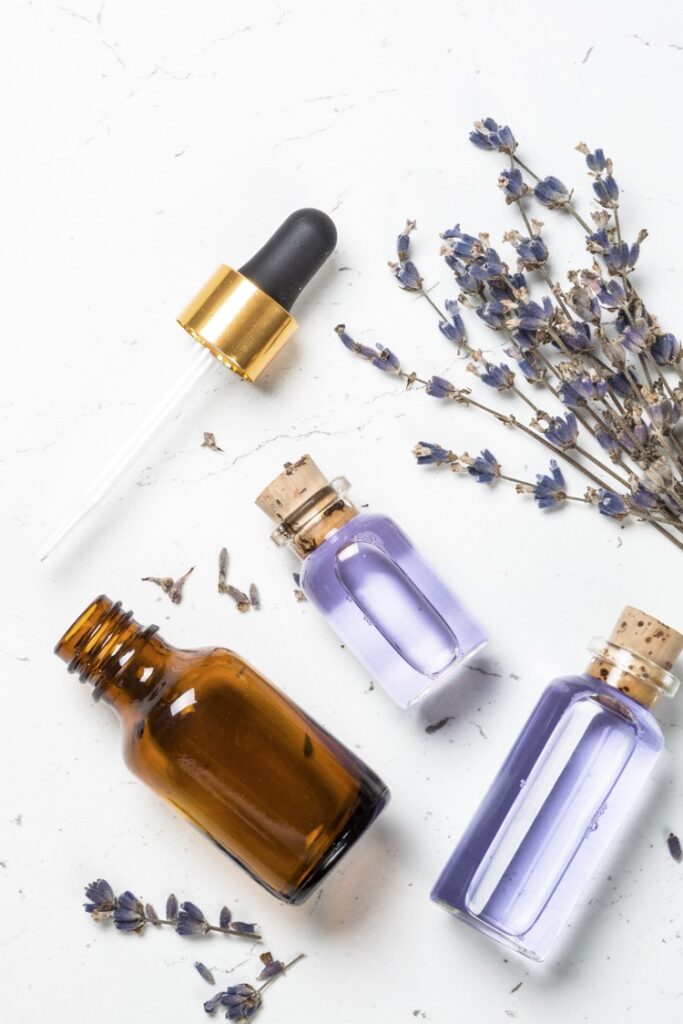Updated: January 22, 2023
When I just started my natural hair journey and heard about the LCO and LOC method, I was so confused. I had so many questions about which one I was supposed to be doing and when. If you’re like me, you also have questions like:
What kind of liquids am I supposed to be using?
How much liquid cream and oil should I be applying?
Does it really matter if all the oils and creams and liquids just go on my hair?
If this is the case, then you’re in luck! In this post I will be going over the difference between the LOC and LCO methods, how to decide which is better for your hair, the details of how it can be beneficial to hair of different porosity levels, and why all the “rules” you’ve heard for which one to use ultimately don’t even matter!
What are the LOC and LCO methods?
LOC and LCO simply refer to the order in which you apply products to your natural hair to moisturize it. They are acronyms that stand for Liquid, Oil and Cream or Liquid, Cream, and Oil.
In this case, liquid refers to a liquid-based product. This may either be plain water, aloe vera juice, another Ayurvedic spritz, or a quality water-based leave-in conditioner.
The oil here is any oil of your choice.
And the cream can be any product with a thick consistency. This could be butter (this hand-whipped shea butter), a styling product, or even a gel (this homemade flaxseed gel).
Layering these products ensures that the water/liquid which hydrates your hair does not evaporate easily.
If your hair ever feels dry soon after you’ve moisturized it, this water is quickly evaporating from the strand!
Simply put — if you’re having a hard time keeping your hair moisturized, the problem may not be the products you’re using.
Rather, the problem may be the order in which you are applying them!
How to Decide Between the LOC and LCO Method for Natural Hair?
Your natural hair will need either the LCO or the LOC method depending on the following points:
1. The current state of your hair
The current state of your hair can also be referred to as your natural hair profile. To determine this, you should ask yourself the following questions (and write the answers down in your hair journal):
- Is your hair low porosity, medium, or high porosity?
- Or is it fine, medium, or coarse?
- Is it low-density, medium-density, or high-density?
- What is your level of sebum production?
- How irritated is your scalp?
This is important to know as high porosity hair, for example, runs the greatest risk of water loss. This is because of all the gaps along the hair’s cuticle. While low porosity hair is easily weighed down and runs the risk of product build-up on the hair and scalp.
You could then decide to use the LCO method on high porosity hair, and the LOC method on low porosity hair. Or you can control the amount of product you apply when using either method.
No matter your hair profile, you should try out each method for two weeks and note how your hair responds to it before you choose your preference.
2. How long its been since wash day
If you’ve just washed and deep conditioned, your hair will be in its most hydrated state until your next wash day!
Unfortunately, no moisture you apply during the week will be as effective as a good moisturizing deep conditioning treatment.
Knowing this, you may want to use the LCO method to seal in as much of that moisture as possible. Then opt for the LOC method to top up that moisture throughout the week.
3. The products you use
In the LOC or LCO method, whatever the second product is will be the second most penetrating element. If you are using a high quality penetrating oil that your hair really likes, you may prefer the LOC method. However, if you have an Ayurvedic hair butter and want to reap its benefits, you would prefer the LCO method.
Additionally, if you only have a sealing oil such as castor oil available, there would be no value to using the LOC method. This is because the castor oil will form a barrier over your natural hair, leaving no room for the cream to provide benefits.
Related Post: 11 Amazing Products for Curl Definition + 5 Techniques!
4. Your personal preference
After experimenting with the two methods, you will naturally pick a favorite. You can decide whether your preference is born from the following considerations:
a. the method that leaves your hair feeling hydrated without being weighed down,
b. the method that leaves your hair looking shinier,
c. the method that seems to reduce frizz, or
d. the method that keeps your hair moisturized for longer before your next wash day.
LOC or LCO for Low Porosity Hair?
Try out both methods and see which one your hair prefers. Try out using LOC, LCO, and even just LO (liquid and oil) and stick with the one your hair loves! Most people say that the LCO method is better for high porosity hair, while the LOC method is for low porosity hair. However, I actually use a combination of both on my high porosity hair!
From paying close attention, I noticed that my hair prefers the LCO method right after I shampoo. However, my hair prefers the LOC method during the week, when there is already a layer of product on the strand.
This is a primary reason why here at Hibiscus Roots we do not offer prescriptive solutions. We preach the values of Ayurveda and promote finding out what “balance” means to you and your hair.
The Products You Use Matter!
An important thing I learned was to pay really close attention to what I used as my “L” or Liquid.
For a long time, I was using a styling cream as my liquid-based moisturizer, sealing it with oil, then layering the same cream over that. Never once spritzing my hair with water, or using a leave-in conditioner.
Smh
I considered myself a minimalist or “lazy natural” but I was killing my hair without even realizing it! Even using plain water instead of the first application of styling cream would have made a world of difference!
It is important too to note that leave-in conditioners offer many specialized benefits to your hair that you can’t ignore! It is an extension of your deep conditioner, so no natural hair regimen is complete without one!
Whether you decide to make your own products or use off-the-shelf products.
An Example of How to do the LOC Method on Natural Hair
- Prep your hair for the process by parting your hair into sections
- Fill your spray bottle with either water, diluted aloe vera juice, or pure aloe vera juice
- Spray the section of hair generously with the liquid
- Press the liquid into the hair strand with your hands from root to tip
- Next, apply a dime-sized amount of olive oil, coconut oil, avocado oil, or your Ayurvedic oil mix to the section. Use the “praying hands” method
- Finally, apply a dime-sized amount of your cream. This could be a whipped butter, pure shea butter, high-quality styling cream or a flaxseed gel
- Repeat for the remaining sections of your hair, then concentrate on the edges of your hair and your nape.
An Example of How to do the LCO Method on Natural Hair
- Prep your hair for the process by parting your hair into sections
- Fill your spray bottle with either water, diluted aloe vera juice, or pure aloe vera juice
- Spray the section of hair generously with the liquid
- Press the liquid into the hair strand with your hands from root to tip
- Finally, apply a dime-sized amount of your cream. This could be a whipped butter, pure shea butter, or a high-quality styling cream
- Next, apply a dime-sized amount of olive oil, coconut oil, avocado oil, or your Ayurvedic oil mix to your hair. Use the “praying hands” method
- Repeat for the remaining sections of your hair, then concentrate on the edges of your hair and your nape.
As you can see, the only thing that changes is the order of steps 5 and 6.
Here’s a video of a YouTube we love explaining the methods in great detail and with visual aids:
Read Next
Next, check out this post for information on the best brands with high-quality natural ingredients. You can find a good leave-in conditioner and cream for the LOC and LCO method. Bonus — they are all owned by Black Women!
You can also check out this post for tips on how to keep the moisture in the hair, once you’ve successfully moisturized it using the LOC or LCO method.
Thanks for reading, and please comment below which method your hair prefers if you do try out the experiment!
featured image: source




